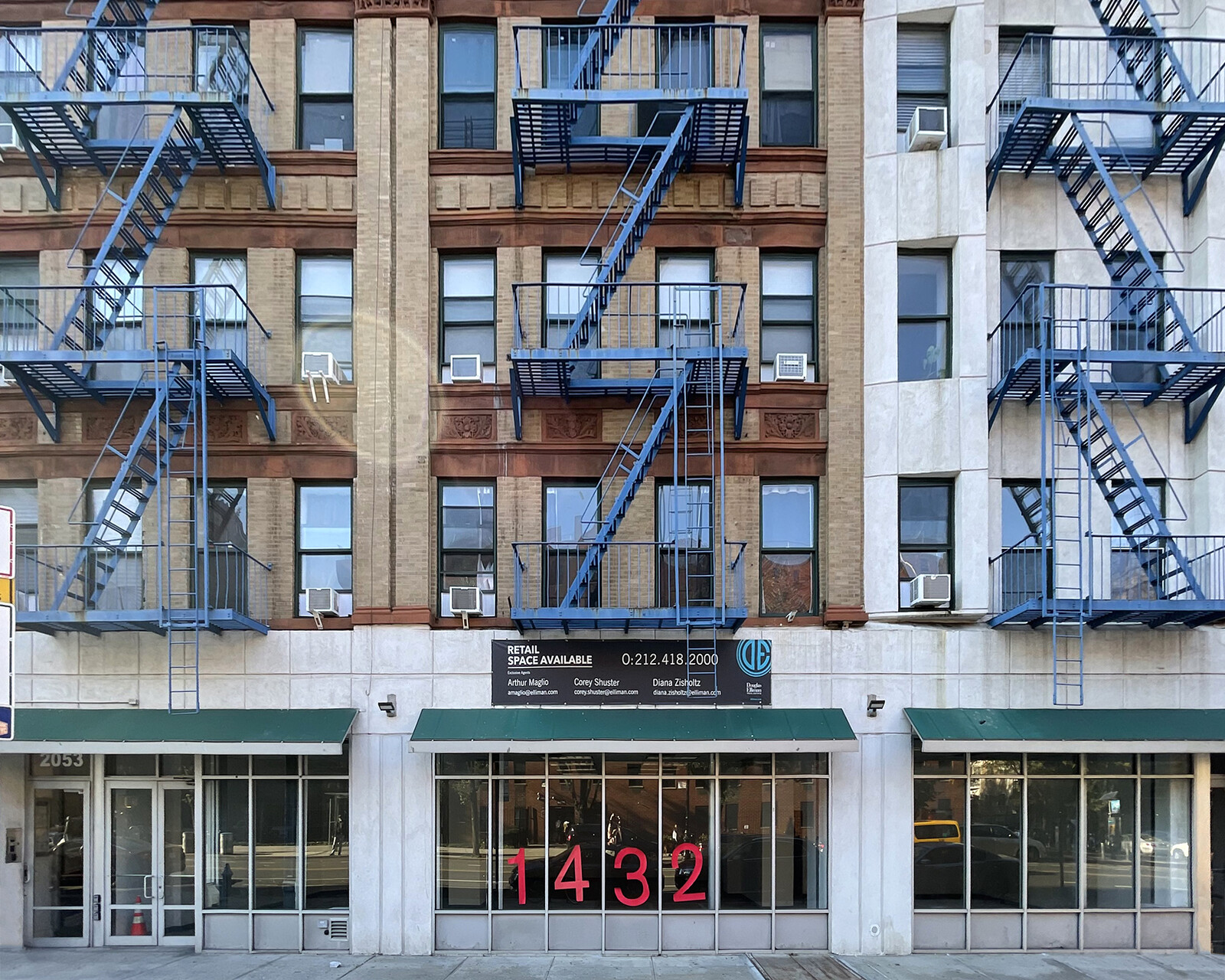Vacant Spaces NY (Actar, 2021) researches the pervasive effects of urban vacancy in New York City, reconsidering them as critical spaces for social engagement and health, intersecting with neighborhood needs and broader urgent concerns such as housing and education. The authors call attention to these underutilized, available spaces by bringing publicly available data, statistics, and observations to the realm of architecture.
According to MOS’s research from 2019, there were 5,313 reported ground-level vacancies in Manhattan. 31.2 million square feet, which has only increased since. This space is an opportunity to design a more healthy, vibrant, and equitable city. An opportunity to imagine something other than underutilized ground-floor retail. To resist homogeneity through individual local interventions, creating more flexible, diverse, and embedded spaces in specific communities. It should be used to address social and urban needs. For instance, a conservative estimate of the retail vacancies could easily provide housing for over 150,000 families.
Organized from large to small, general to specific, the book is separated into three sections: 1. Vacancy in general; 2. Vacancy specific to Manhattan; 3. Case studies imagining possibilities for transforming current vacant spaces into housing or social services. Because the data on vacancy in New York City is opaque, MOS photographed vacancies in each Manhattan neighborhood, recording their property ownership, time since last occupied, and rentable square footage. Of the documented vacancies, the average time a space remained unoccupied was 1,316 days—3.6 years.
The basic provocation of MOS’s study is that large-scale problems do not always need to be met with large-scale solutions—more building, additional infrastructure, huge investments. Solutions exist that don’t take decades to develop, that reinvigorate street life, that are incremental and equitably distributed throughout the city. Intended as a resource for architects, designers, policy makers, and community groups, Vacant Spaces NY is simply meant to show something taken for granted, vacant spaces, taking part in a collective process of imagining a better city.
Michael Meredith is a Professor at Princeton University’s School of Architecture, and Co-Founder of the New York-based architecture and design studio MOS.
Hilary Sample is the IDC Professor of Housing Design at Columbia University GSAPP, and Co-Founder of the New York-based architecture and design studio MOS.
Size: 6 x 9 inches.
Pages: 608
ISBN: 9781948765992
Softcover
Publication Date: December 2021
Published By: Actar Publishers
Designed by MOS and Studio Lin.
Press inquiries: info [at] mos.nyc














